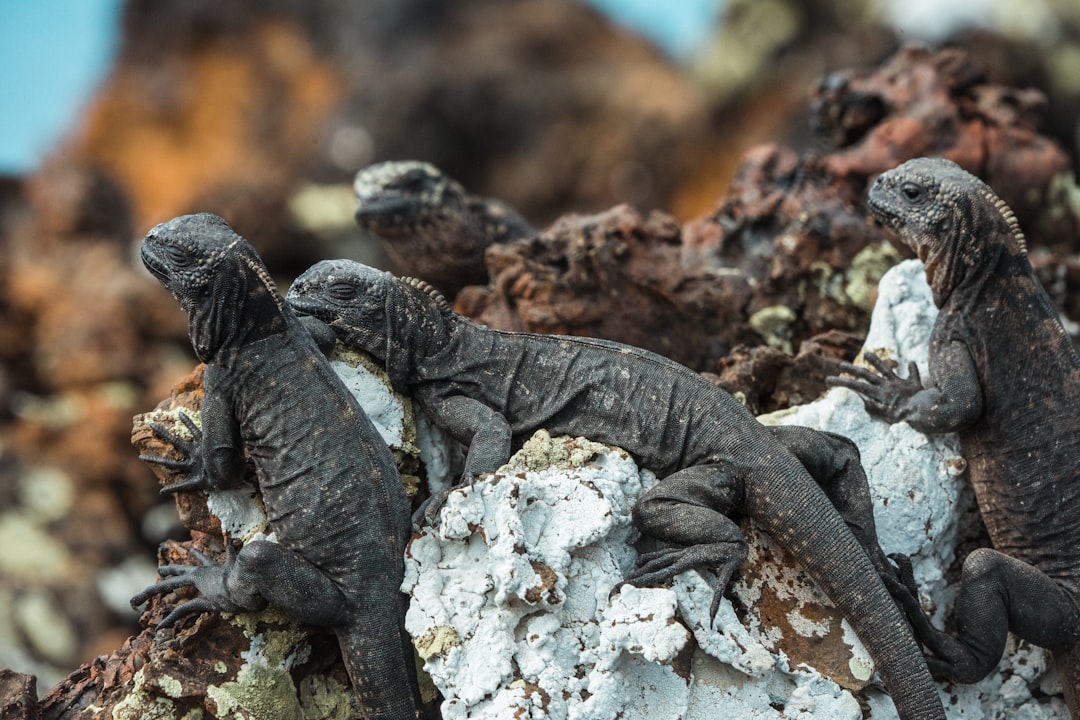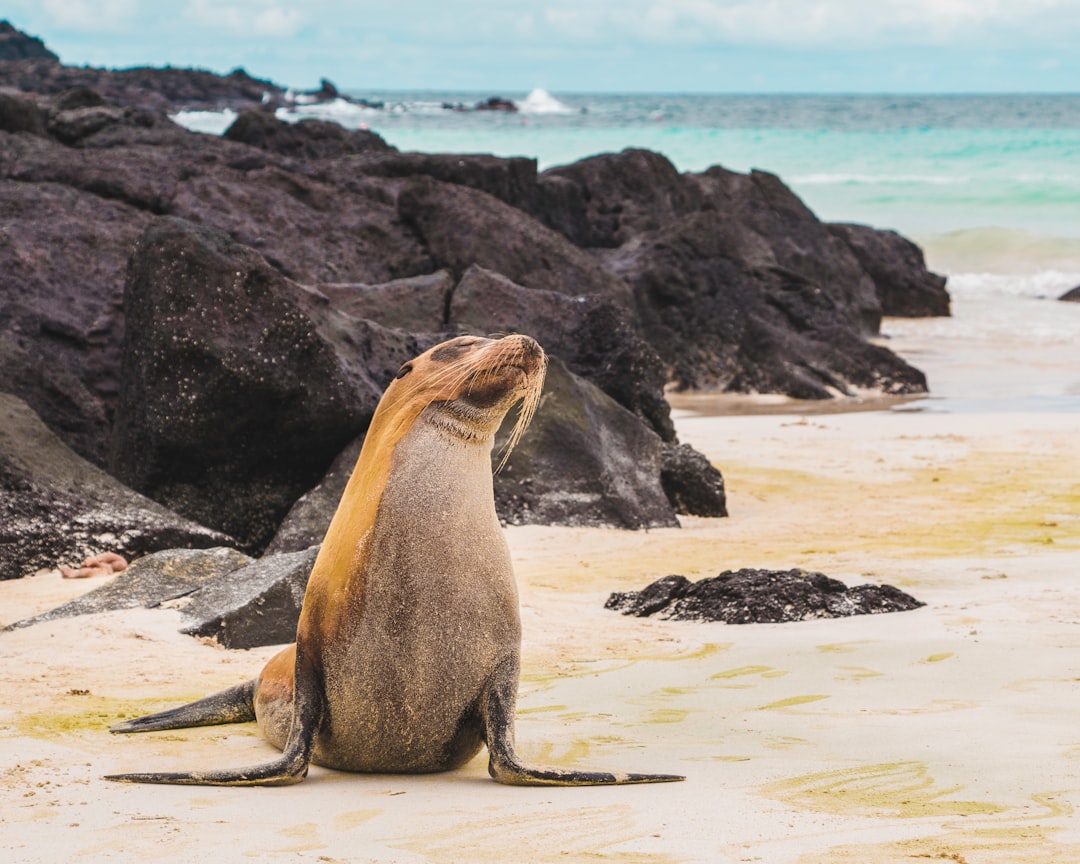The Galapagos Islands Double Entry Fee to Curb Overtourism
The Galapagos Islands Double Entry Fee to Curb Overtourism - Preserving a Natural Wonder

The Galapagos Islands, a natural wonder and a UNESCO World Heritage site, is taking measures to address the strain caused by increasing tourism. Effective August 2024, the entry fee for most international visitors will be doubled, from $100 to $200. This dramatic increase aims to deter some tourists and generate revenue for conservation efforts and infrastructure improvements, ensuring the long-term sustainability of the archipelago's delicate ecosystem.
The Galapagos Islands are home to over 2,000 unique species, with around 80% of the land birds, 97% of the reptiles, and 30% of the plants found nowhere else on Earth.
This exceptional biodiversity makes the archipelago a true natural wonder.
The Galapagos tortoise, one of the islands' most iconic residents, can live for over 100 years, making it one of the longest-lived vertebrates on the planet.
These gentle giants have fascinated researchers and visitors alike for centuries.
The Galapagos Islands are located on the Nazca Tectonic Plate, which is slowly moving away from the South American continent at a rate of about 5 inches (8 cm) per year.
This unique geological setting has shaped the formation and evolution of the islands over millions of years.
The Galapagos Marine Reserve, which surrounds the islands, is one of the largest protected areas in the world, covering an area of over 50,000 square miles (130,000 square kilometers).
This vast underwater realm is home to an incredible diversity of marine life, including sharks, rays, and the famous Galapagos marine iguana.
The Galapagos Islands are considered a living laboratory for evolutionary studies, as the isolated nature of the archipelago has allowed species to evolve in unique ways.
Charles Darwin's groundbreaking observations during his visit to the islands in the 1830s laid the foundation for his theory of evolution by natural selection.
The Galapagos National Park, which covers 97% of the land area of the islands, is known for its strict regulations and controlled access to protect the delicate ecosystem.
Visitors must adhere to strict guidelines to minimize their impact on the environment and wildlife.
What else is in this post?
- The Galapagos Islands Double Entry Fee to Curb Overtourism - Preserving a Natural Wonder
- The Galapagos Islands Double Entry Fee to Curb Overtourism - Balancing Tourism and Conservation
- The Galapagos Islands Double Entry Fee to Curb Overtourism - Reinvesting in Ecological Protection
- The Galapagos Islands Double Entry Fee to Curb Overtourism - Regulating Visitor Impact
- The Galapagos Islands Double Entry Fee to Curb Overtourism - Sustainable Travel Strategies
- The Galapagos Islands Double Entry Fee to Curb Overtourism - Responsible Ecotourism in Practice
The Galapagos Islands Double Entry Fee to Curb Overtourism - Balancing Tourism and Conservation
The Galapagos Islands, a renowned UNESCO World Heritage site, is taking a bold step to address the challenges of overtourism by doubling its entry fee for foreign visitors. Starting August 1, 2024, the cost of visiting this unique archipelago will increase from $100 to $200 per person. This move aims to curb the influx of mass tourism and generate additional funds to support vital conservation efforts.
The Galapagos Islands' delicate ecosystem faces mounting pressures from rising visitor numbers, land-based tourism, waste management, and the introduction of invasive species. The doubling of the entry fee is a crucial measure to strike a balance between sustainable tourism and the preservation of the islands' diverse array of endemic species, including the iconic giant tortoises and marine iguanas.
The Galapagos Islands are home to some of the most unique and diverse flora and fauna in the world, with over 50% of the species found nowhere else on Earth.
The Galapagos National Park covers an area of 8,010 square kilometers, making it one of the largest protected areas in the world.
The islands are situated on the Nazca and Cocos tectonic plates, which are slowly moving apart, causing the islands to drift apart over time.
The Galapagos Islands are known for their volcanic landscapes, with over 100 extinct or dormant volcanoes scattered across the archipelago.
The Galapagos tortoise, one of the most iconic species found in the islands, can live for over 100 years and weigh up to 500 pounds.
The Galapagos marine iguana is the only lizard in the world that has adapted to a marine environment, feeding on algae in the ocean.
The Galapagos Islands are a natural laboratory for the study of evolution, as Charles Darwin's observations of the islands' unique species were a key inspiration for his theory of evolution by natural selection.
The Galapagos Islands Double Entry Fee to Curb Overtourism - Reinvesting in Ecological Protection

The Galapagos Islands' decision to double the entry fee for most international visitors is a clear commitment to reinvesting in ecological protection. By directing the increased revenue towards conservation efforts, the Ecuadorian government is taking decisive action to safeguard the fragile island ecosystem against the pressures of growing tourism.
The Galapagos Islands are home to over 9,000 known species, with 25% of them found nowhere else on Earth, making it a global biodiversity hotspot.
The new $200 entry fee for the Galapagos Islands is the highest national park fee in the world, surpassing the $100 charge for the Serengeti National Park in Tanzania.
According to a 2023 study, the Galapagos Islands receive over 275,000 visitors annually, a 50% increase from a decade ago, leading to significant strain on the fragile ecosystem.
The Galapagos Islands have 13 major islands, 6 smaller islands, and over 40 islets, making it one of the largest and most complex archipelagos in the world.
In 2022, the Galapagos National Park recorded its highest number of endemic species, with over 2,500 species found only within the archipelago.
A recent analysis by the Ecuadorian Ministry of Environment revealed that the cost of maintaining the Galapagos Islands' ecosystem is approximately $50 million per year, highlighting the need for increased funding.
The Galapagos Islands are home to the world's only species of marine iguana, which can dive up to 30 meters (100 feet) to feed on algae, a unique adaptation.
Interestingly, the new $200 entry fee is still relatively low compared to other high-profile destinations, such as Bhutan's $200 per day tourist tax and the Maldives' $200 Green Tax.
The Galapagos Islands Double Entry Fee to Curb Overtourism - Regulating Visitor Impact
In a move to address the growing issue of overtourism, the Galapagos Islands in Ecuador will be doubling its entry fee for visitors starting in August 2024. The new fee, which will rise from $100 to $200 for most international tourists, aims to fund crucial conservation efforts and infrastructure improvements to protect the archipelago's unique biodiversity and natural habitats. This decision comes as the Galapagos, a UNESCO World Heritage Site renowned for its diverse wildlife and ecosystems, has faced increasing pressure from rising tourist numbers in recent years.
The fee hike, the first since 1998, is a bold step by the authorities to strike a balance between tourism and conservation, ensuring the long-term preservation of this ecological treasure. While the increased cost may deter some visitors, it reflects the Galapagos' commitment to safeguarding its delicate environment and maintaining its status as a premier destination for eco-conscious travelers.
The Galapagos Islands are home to over 9,000 unique species, many of which are found nowhere else on Earth, making it a global biodiversity hotspot.
The islands' marine environment is equally diverse, with over 20% of the species found in the surrounding waters being endemic, including the famous Galapagos penguin, the only penguin species that lives north of the equator.
The Galapagos tortoise, one of the islands' most iconic residents, can live up to 100 years and weigh over 500 pounds, making them the largest living species of tortoise.
The Galapagos Islands are located over 600 miles from the Ecuadorian mainland, making them one of the most remote and isolated archipelagos in the world.
The islands' unique geological formation, with their volcanic origins and lack of natural predators, has allowed many species to evolve in isolation, leading to the high level of endemism.
The increased entry fee aims to limit the number of visitors to the islands, which have seen a significant rise in tourism in recent years, putting a strain on the delicate ecosystem.
The revenue generated from the doubled entry fee will be used to fund conservation efforts, including protecting endangered species, restoring habitats, and improving infrastructure to support sustainable tourism.
The Galapagos Islands were designated as a UNESCO World Heritage Site in 1978, recognizing their outstanding universal value and the importance of preserving this unique natural wonder.
Despite the increase in entry fees, the Galapagos Islands remain a popular destination for eco-tourists and adventurous travelers, who are drawn to the opportunity to witness the islands' remarkable wildlife and natural landscapes.
The Galapagos Islands Double Entry Fee to Curb Overtourism - Sustainable Travel Strategies

Sustainable travel strategies are becoming increasingly important as destinations like the Galapagos Islands grapple with the challenges of overtourism. The Ecuadorian government's decision to double the entry fee for the Galapagos Islands is a bold move to address the environmental impact and ensure the long-term sustainability of this unique ecosystem. The additional funds will support conservation efforts and local communities, demonstrating a commitment to responsible tourism practices. As travelers seek more environmentally conscious options, destinations that prioritize sustainable strategies will likely become even more appealing.
The Galapagos Islands are home to some of the rarest and most unique species on the planet, including the iconic Galapagos tortoise, which can live up to 100 years.
In 2023, the Galapagos National Park reported a record-breaking 271,000 visitors, a 30% increase from the previous year, highlighting the growing demand for travel to the islands.
The Ecuadorian government is exploring the implementation of a cap on the number of daily visitors to the Galapagos Islands to better manage the influx of tourists and protect the delicate ecosystem.
Cruise ships are a popular way to explore the Galapagos Islands, but they can have a significant environmental impact due to their fuel consumption and waste generation.
Some cruise lines are exploring more sustainable options, such as electric or hybrid-powered vessels.
The Galapagos Islands are considered a living laboratory for evolutionary biology, with many species found nowhere else on Earth, such as the Galapagos penguin, the only penguin species that lives north of the equator.
The Galapagos National Park has implemented a comprehensive system of visitor management, including guided tours, limited daily visitor numbers, and the prohibition of certain activities to protect the islands' fragile ecosystems.
The Ecuadorian government is investing in renewable energy sources, such as solar and wind power, to reduce the carbon footprint of the Galapagos Islands and move towards a more sustainable energy future.
The Galapagos Islands are a UNESCO World Heritage Site, recognized for their outstanding natural value and the importance of their conservation for the benefit of humanity.
The increased entry fee to the Galapagos Islands is expected to generate an additional $27 million per year, which will be used to fund conservation efforts, environmental education programs, and support for local communities.
The Galapagos Islands are a popular destination for citizen science projects, where visitors can contribute to ongoing research and monitoring of the islands' unique flora and fauna.
The Galapagos Islands Double Entry Fee to Curb Overtourism - Responsible Ecotourism in Practice
The Galapagos Islands' Approach
The Galapagos Islands, a renowned UNESCO World Heritage site, have taken a proactive step to balance tourism and conservation by doubling their entry fee. Starting August 2024, most international visitors will now pay $200, up from the previous $100, in an effort to curb overtourism and protect the islands' fragile ecosystem. This measure reflects the islands' commitment to sustainable tourism practices, ensuring the delicate balance between showcasing their natural wonders and safeguarding the environment for future generations.
The Galapagos Islands have seen a 60% increase in tourist arrivals over the past 5 years, with over 275,000 visitors in 2023 alone.
The new $200 entry fee for international visitors is expected to generate an additional $5 million in annual revenue for the Galapagos National Park.
Funds from the increased entry fee will be used to expand the Galapagos National Park's ranger force by 20%, allowing for more comprehensive monitoring and enforcement of protected areas.
Scientists estimate that the Galapagos Islands can sustainably support a maximum of 200,000 visitors per year without irreversible damage to the ecosystem.
The Galapagos Islands are home to over 2,000 endemic species, including the iconic Galapagos tortoise, which can live for over 100 years.
Cruise ships visiting the Galapagos will now be required to offload all solid and liquid waste at mainland ports, rather than dumping it in the ocean.
The Galapagos National Park has implemented a new "green certification" program for tour operators that meet strict sustainability criteria, including limits on group sizes and use of renewable energy.
Visitors to the Galapagos will now be required to watch a 30-minute educational video on responsible tourism practices before entering the islands.
The Galapagos National Park has designated 60% of the archipelago's land area and 40% of its marine area as strictly off-limits to visitors.
Local Galapagos residents will continue to pay a reduced entry fee of $50, in an effort to promote sustainable tourism and engage the community.
The Galapagos Islands have been selected as a pilot site for a new international "Ecotourism Hall of Fame" program, recognizing destinations that excel in sustainable tourism practices.
